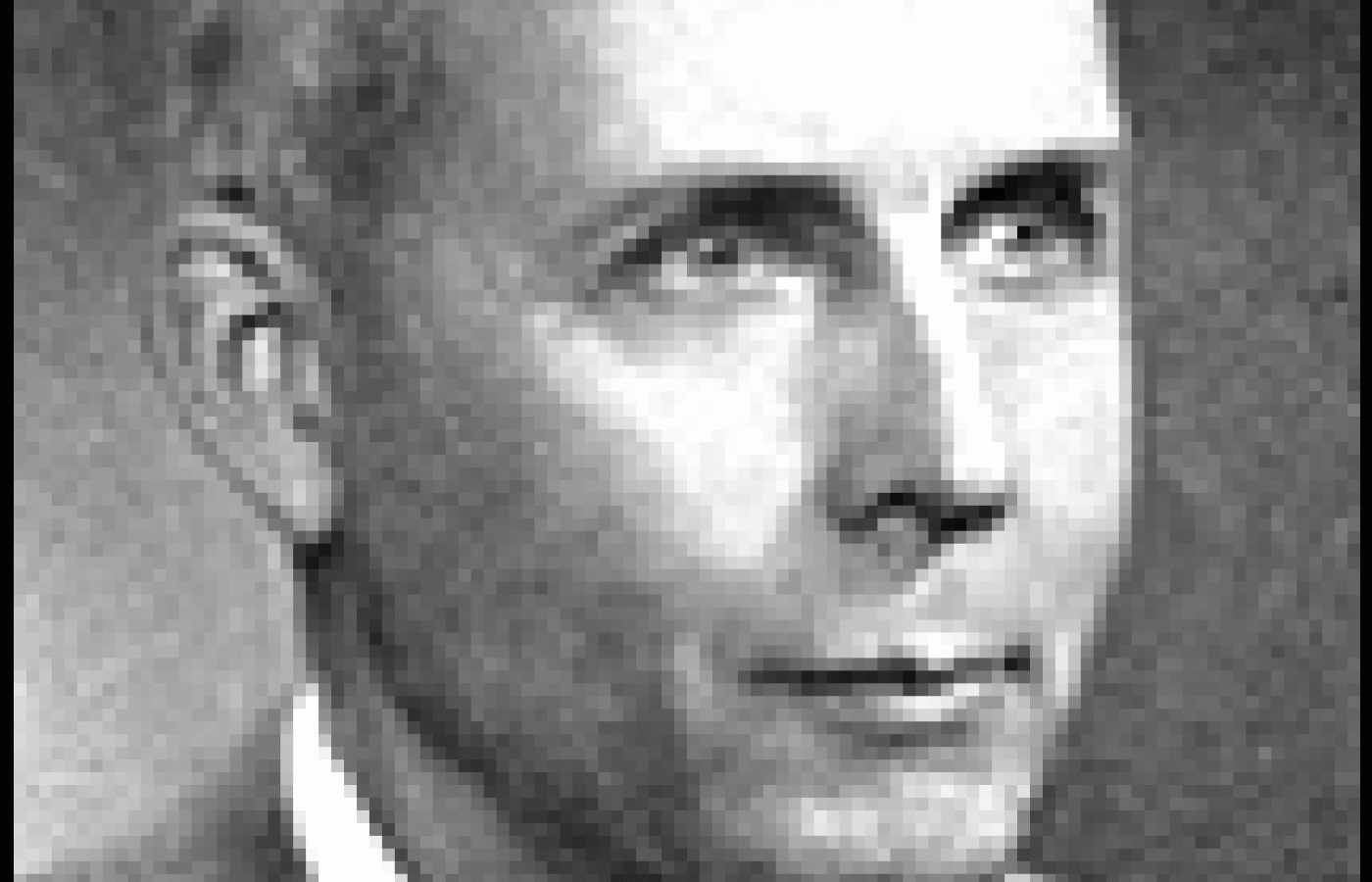Refund requests are an unavoidable part of running a chiropractic practice. Whether a patient is unhappy with their care, believes an adjustment caused harm, or simply changes their mind, these situations must be handled carefully to avoid escalation. While chiropractors are not legally obligated to issue refunds in most cases, there are times when doing so is the best business decision to protect the practice.
Chiropractic Education, 1945: A Snapshot, Part I
As World War II drew to a close, chiropractors attempted to upgrade, rate and seek recognition for their training institutions. In Canada, the newly formed Dominion Council of Canadian Chiropractors (today's CCA) committed to providing chiropractic education. The Canadian Memorial Chiropractic College (CMCC), the first school in the nation since the late 1920s, was scheduled to open its doors in September 1945. In preparation for this rebirth, several prospective faculty members of the new school sought models and guidance from several larger institutions operating in the United States. The following report excerpts (available in the library archives of CMCC), describe the faculty members' experience during an auto tour of four schools within weeks of the opening. Added are images related to Lincoln, Logan Basic, National and Palmer schools and their key figures as they existed at that time.
Report on Trip to the National College of Chiropractic, the Palmer School of Chiropractic, the Logan Basic College of Chiropractic, and the Lincoln Chiropractic College
By Audrey Rushbrook, September 10, 1945:
Before opening the Canadian Memorial Chiropractic College in Toronto, Ontario, it was decided to make a trip to four of the outstanding chiropractic colleges in the United States, in order to study their courses, equipment, and general outline of how their colleges are run, so that we might incorporate the best features of all into our own college here. A committee was chosen, consisting of Dr. Clubine, Dr. Kennedy, Dr. Lee, and two permanent members of the staff, Dr. Allan and Miss Rushbrook. The trip required eight days, from Saturday, September 1st until Saturday, September 8th. The colleges visited were the National College of Chiropractic in Chicago, Illinois; the Palmer School of Chiropractic in Davenport, Iowa; the Logan Basic College of Chiropractic in St. Louis, Missouri; and the Lincoln College of Chiropractic in Indianapolis, Indiana. These colleges were chosen because of their geographic location, so that as many as possible of the outstanding colleges could be visited in the short time at our disposal. At every college, the committee was given a most cordial welcome and every possible help and advice was freely given.
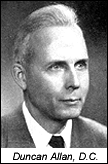
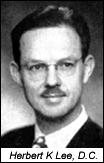
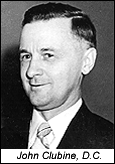
The National College of Chiropractic
Dr. Joseph Janse, dean of the senior class, cut short his holiday to receive the committee at the school on Sunday afternoon. We first had a discussion in his office, where he gave us an outline of the course at National, and then answered questions for us. When he had given us all the information we asked of him he conducted us through the school. Being Sunday, there were no classes in session, and so we did not see any of the student body.
Faculty Members: The college employs seventeen faculty members and administrative officials. For the basic science subjects, the members of the staff were university trained, usually with the highest degrees obtainable in their particular field, but these, in most cases, were not chiropractors.
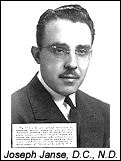
Course: The school day is from 8:30 in the morning until three o'clock in the afternoon, with each lecture or laboratory period an hour-and-a-half long. On Monday, Wednesday and Friday the timetable is exactly the same, each subject taken being one that requires three periods a week. Those subjects that require only two periods a week are given on Tuesdays and Thursdays. There are no classes on Saturday.
The length of course is four years of nine months each; the basic science subjects are covered in the first two college years; there is no practical work in X-ray given. In the fourth year there is a quiz class given for a review of the work taken previously, in order to refresh the students' minds for the state board examinations.
Clinic: At National there are two clinics: one, a free clinic; and the other, a pay clinic conducted under the name of the Chicago General Health Service. Dr. Janse maintained that two clinics were justified and necessary.
The free clinic is conducted in the classroom. The students give the examination and adjustments. The patient pays one dollar for 15 treatments if financially able and thus inclined. The pay clinic is run under a separate "nonprofit" charter: The patient is charged three dollars for a complete physical and clinical examination, which includes urinalysis. A dollar extra is asked for each extra test, such as blood count, a Kahn or a Wasserman.
For an adjustment and electrical treatment, the charge is (12 treatments for) $10 or $1 apiece. For an adjustment, electrical treatment and colonic the charge is (10 treatments for) $25. The interns are paid from 10 to 20 cents per treatment, and they are given credit for hours spent in the clinic. Internship in the free clinic is compulsory with a minimum of 300 hours, but internship in the pay clinic is optional.
Finances: Dr. Janse emphasized the fact that it is necessary to have a paying clinic to meet the financial obligations of the school, which cannot be self-supporting on tuition alone.
Revenue for the college is also derived from the dormitories which are in the school, and also from the clinical laboratory, which is part of the pay clinic.
Tour of the Building: The building is a large five-storied stone-and-brick structure, and was originally designed for a school, thus it contains good-sized and well-situated classrooms. The chemistry laboratory is half of the chemistry lecture room. The front half of the room contains seats and a blackboard, while across the back are two long chemistry benches containing the necessary chemical equipment and reagents. Running around three sides of the room is a bench for microscopes, where the laboratory work using microscopes is carried on.
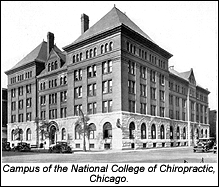
In the dissection room there are special stainless steel tables that consist of two shelves that can be revolved, so that the shelf in use at any time is on top, and the other is directly beneath it. These shelves can be moved from the upper to the lower position, or vice-versa, without disturbing the cadavers. In this way, two classes can use the same set of tables, which saves half the space.
The school is building up an extensive library of charts and drawings mounted on masonite, which can be thrown on the screen for classroom study. There is also a museum of anatomical specimens, which is continually being added to.
Palmer School of Chiropractic
Dr. B.J. Palmer met the committee in the office of his clinic at eight o'clock in the morning, and after a short conversation he conducted us through his clinic, then through the college proper, and left us at about noon with Dr. Chance, who discussed in detail the bookkeeping system used by the students in the clinic. At two o'clock in the afternoon, the committee again met with Dr. Palmer, at which time he took us to his home, where we held a discussion until four o'clock.
Faculty: It appeared to the committee that all the faculty members were chiropractors. Dr. Palmer's attitude was to teach his students straight chiropractic, and while he also taught basic science subjects, he emphasized the fact that this was only so that his students could pass the state boards.
Course: Classes start at eight o'clock in the morning. The course is eighteen months long and continuous. New students are admitted every two months. The reason that this is possible is because each subject is arranged so that it is completed in two months. There is no dissection given in the course, and we did not see a chemical laboratory on our tour through the school. There are about four hundred students at the school at present.
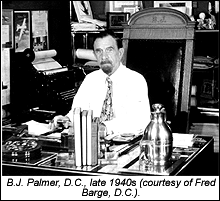
Clinic: The clinic is free. Dr. Palmer objected to a pay clinic because he said there was a tendency for some of the students to get all of the work and others practically none.
There is a very elaborate bookkeeping system, which is rigidly enforced. Each student is given credit, or a loan for $1,300. Out of this he must buy his equipment for his office and pay for the overhead expenses and interest on his loan. Each month he must pay back as much as possible of his debt; however, he is allowed to overdraw to the extent of one hundred dollars, but if he goes further in debt than that he must take out a further note. His credit comes from the amount earned by each treatment given. A student is not allowed to graduate until he has paid back all he owes the clinic. The clinic is conducted in the auditorium hall.
Finances: Dr. Palmer agreed also that a school cannot be run on tuition fees alone, and other means must be found to make up the deficit. In conjunction with his school, he also runs a printing press and two radio stations. He himself has interests in twenty-eight separate enterprises.
Tour of the Building: Dr. Palmer's private clinic is also on the school premises. Here he has very elaborate equipment for making all kinds of tests: chiropractic, medical and electronic. He is very exacting about every detail, and as many as possible of his machines are perfectly automatic. Rooms that contain electronic equipment and his neurocalometer are completely shielded with sheet iron and copper screening, and his X-ray room is shielded with sheet lead. He showed us his electroencephaloneuromentimpograph, which measures, calibrates and evaluates nerve force quantity flow both before and after adjustment.
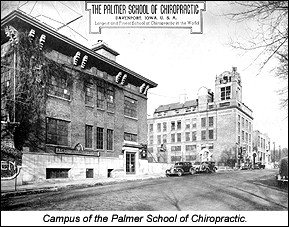
In his clinic, there is a completely equipped rehabilitation gymnasium, along one side of which are large tanks containing brightly colored goldfish and various water plants. There are several cages of singing birds here, and facing these tanks are comfortable lounging couches for the patients to rest.
The classrooms in the school proper are very large and well ventilated. There are two ornamental gardens in the school grounds: one for the patients of Dr. Palmer's clinic; and the other for the students.
Joseph Keating Jr., PhD
Phoenix, Arizona
jckeating@aol.com
